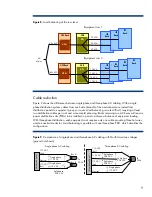
Figure 2 shows basic power distribution at the row level of a data center. The primary distribution
components are the UPSs, the power distribution rack, and the power distribution cables. While this
paper describes the UPSs as being in front of (feeding) the power distribution panels, alternate
configurations are possible depending on data center needs.
Figure 2
. AC
power distribution at the row level
Server Rack
Server Rack
Server Rack
IT
Equipment
Rack
Power
Distribution
Rack
Distribution
Panel
415/230 VAC
or
208/110 VAC
415Y
or
208 VAC
UPS
Rack
UPS
415Y
or
208 VAC
Power
Distribution
Units
UPS
UPS
UPS
UPS
UPS
Distribution
Panel
Power
Distribution
Cables
Under normal conditions, the UPSs receive input power from the AC mains in the range of 415Y/230
VAC (international) or 208Y VAC (North America). If the input power rises above or falls below the
expected range or if it is interrupted completely, the UPSs go online and apply battery power to the
distribution panels. The UPSs will continue to provide battery power until utility power is restored to
within the accepted operating range or until the building generator can produce the required power,
whichever comes first. Once UPS input power resumes (either because the building generator comes
online or because utility power is restored) the UPSs will go back offline and resume their normal
mode of operation, which is to charge the batteries while allowing power from the generator to pass
through to the power distribution rack. The power distribution rack evenly distributes AC power
through the distribution cables to the IT equipment racks.
Concerns and trends in designing power infrastructures
The power distribution system of a data center should provide the following:
•
Flexibility—easily adaptable to reconfigurations of the data center
•
Scalability—expandable with IT infrastructure growth
•
Reliability—providing constant service with no unscheduled downtime
•
Efficiency—minimizing the cost of utility power and reducing greenhouse gas emissions
The actual power infrastructure of a data center will depend on several factors:
•
Number of racks:
–
Small data center: fewer than 20 racks
–
Medium data center: 20 to 100 racks
–
Large data center: more than100 racks
3














